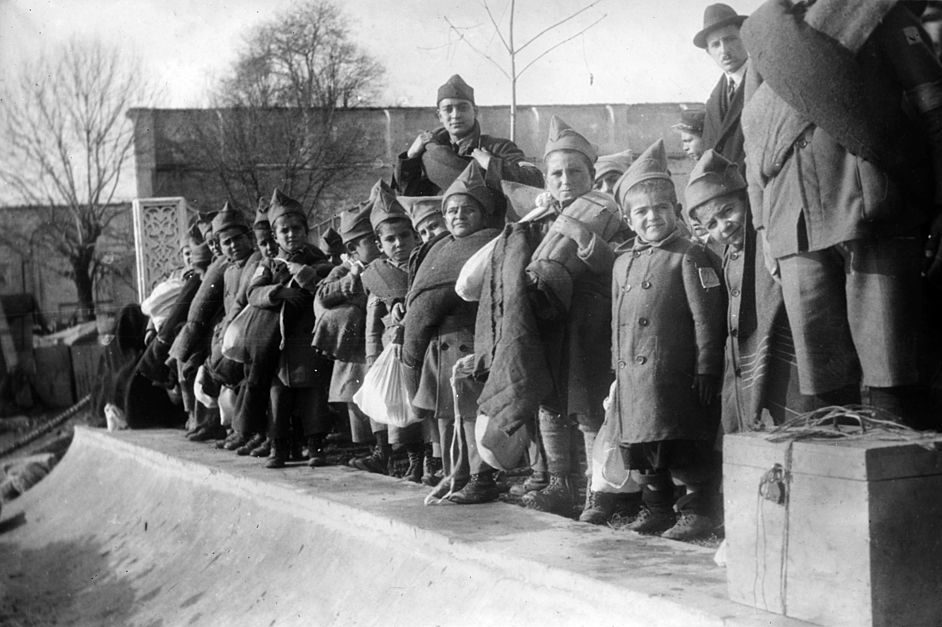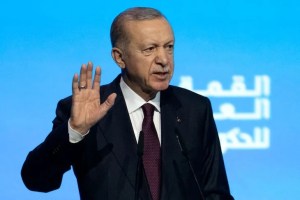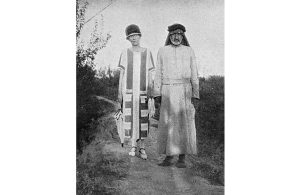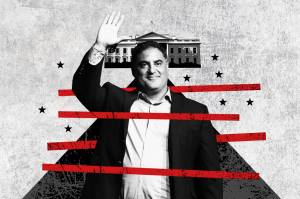‘Who remembers the annihilation of the Armenians?’ Hitler asked in August 1939. Raphael Lemkin did. In 1944, Lemkin, a Polish-born Jew, published the theory of ‘genocide’. Lemkin’s models were the ongoing genocide of Europe’s Jews, and the Meds Yeghern, the ‘Great Calamity’ of 1915-16: the systematic murder of Armenian Christians by the Ottoman Turkish state and its local helpers. Today, on the 104th anniversary of the beginning of the genocide, we should remember the Armenians — and not forget the disgraceful denial of the genocide by the modern Turkish state.
In 1915, some two million Armenians lived in Ottoman Turkey, three-quarters of them in six provinces of eastern Anatolia, on the borders of Russia and Persia. By 1918, 90 percent were gone. An estimated one-and-a-half million were murdered in their towns and villages, or killed by disease, starvation, and death marches into camps in the Syrian desert, where the last survivors were massacred. Hundreds of thousands of women and children were forced to convert to Islam; tens of thousands more fled to the Russian Caucasus as refugees.
The genocide of 1915 was the worst instance of the massacres that accompanied the weakening of the Ottoman Empire and the rise of nationalism among its subjects. The pattern in the blood-soaked carpet includes the indiscriminate killing of thousands of Greek Christians in 1822, as recorded in Delacroix’s Massacre at Chois; the ingenious and varied sadism of the ‘Bulgarian Horrors’ of 1876; and the killing of some 100,000 Anatolian Armenians in 1894-96, which was described by the New York Times as a ‘holocaust’ — probably the first time the term was used to describe the attempted annihilation of a people. Nor was the Armenian genocide the last mass slaughter in the fall of the Ottomans. In 1922, an estimated 500-750,000 Greek Christians were killed, and the remainder of Turkey’s historic Greek population expelled.
To this day, the Turkish government claims that there was no Armenian genocide, and that what happened was the Armenians’ fault. Non-Turkish scholars, however, are almost unanimous in describing the killings as genocide. This definition has been endorsed by Pope Francis (2015), the European Parliament (1987), the Council of Europe (2001), the Anti-Defamation League (2007), Russia (1995) and by almost all western European states. The exceptions are states that persist in dodging the term ‘genocide’ for strategic reasons. They include Spain, the UK, the United States and, ironically and immorally, Israel.
This morning’s statement from Donald Trump continues the ignoble American tradition of refusing to call a genocide a genocide: ‘Today, we commemorate the Meds Yeghern and honor the memory of those who suffered in one of the worst mass atrocities of the 20th century. Beginning in 1915, one and a half million Armenians were deported, massacred, or marched to their deaths in the final years of the Ottoman Empire.’
A recent and authoritative study, Ronald Suny’s They Can Live in the Desert (2015), proves that the killings more than satisfy the criteria of modern genocide, especially because they were directed from the highest levels of government. The ‘Young Turks’ of the Committee of Union and Progress (CUP) had long seen their minorities as obstacles to forming a modern Turkish identity. Talat Pasha, the interior minister, told the German ambassador that, with World War One preventing ‘diplomatic intervention’ from other countries, he planned to make a ‘clean sweep of internal enemies’. There should be no doubt that the killings were directed from the highest level: Talat Pasha installed a personal telegraph office in his home, so that he could direct the slaughter in Anatolia, and keep count of the bodies.
The barbarism that followed Talat’s order, ‘Burn – Demolish – Kill’, was witnessed and reported by outsiders, notably US ambassador Henry Morgenthau, who resigned his post in order to publicize the Armenian tragedy in the United States. In May 1915, the Russians, British, and French denounced Turkish ‘crimes against humanity’; the first use of the phrase. Churchill suggested using mustard gas against the Turkish defenses at Gallipoli, in retaliation for ‘the massacres of Armenians, as well as the killing of many British soldiers after they had tried to surrender’. By the end of August 1915, when American missionaries reported seeing trainloads of Armenians being deported to the Syrian desert, Talat reported, ‘The Armenian question no longer exists.’
When the modern Turkish republic emerged in the 1920s, its leader Mustapha Kemal, the future Atatürk, insisted that his movement had no connection to the CUP. Yet in many ways the Kemalists were the CUP’s fraternal successor. Links between the CUP and the Kemalists had been tight, with the CUP helping to initiate the nationalist revolt in Anatolia, and many Young Turks joining the Kemalists. Like the CUP, Atatürk blamed the Armenians for their sufferings: they had pursued, Atatürk said, ‘separatism’ in a ‘savage manner’.
We hear the same denials, and the same false history, from Turkish president Recep Tayyip Erdogan today. ‘The relocation of the Armenian gangs and their supporters, who massacred the Muslim people, including women and children, in eastern Anatolia, was the most reasonable action that could be taken in such a period,’ he tweeted in English. ‘The doors of our archives are wide open to all seeking the truth.’
The doors of Turkey’s state archives are notoriously sensitive to the enquiries of historians who have failed to regurgitate the official Turkish line on the genocide. As for Erdogan’s grasp of the truth, the modern sultan followed up one false claim with another, alleging that France killed 800,000 people in Rwanda in the Nineties.
Turkey’s slow and apparently irreversible drift out of the Western alliance makes it more likely that, sooner or later, the governments of Britain, Israel and the US will take the reasonable action of acknowledging the historic reality. Until then, every April 24 the President of the United States will demean his office by emitting mealymouthed minimizations, and all to avoid enraging the Islamist president of an increasingly hostile power.
Dominic Green is Life & Arts Editor of Spectator USA.


















